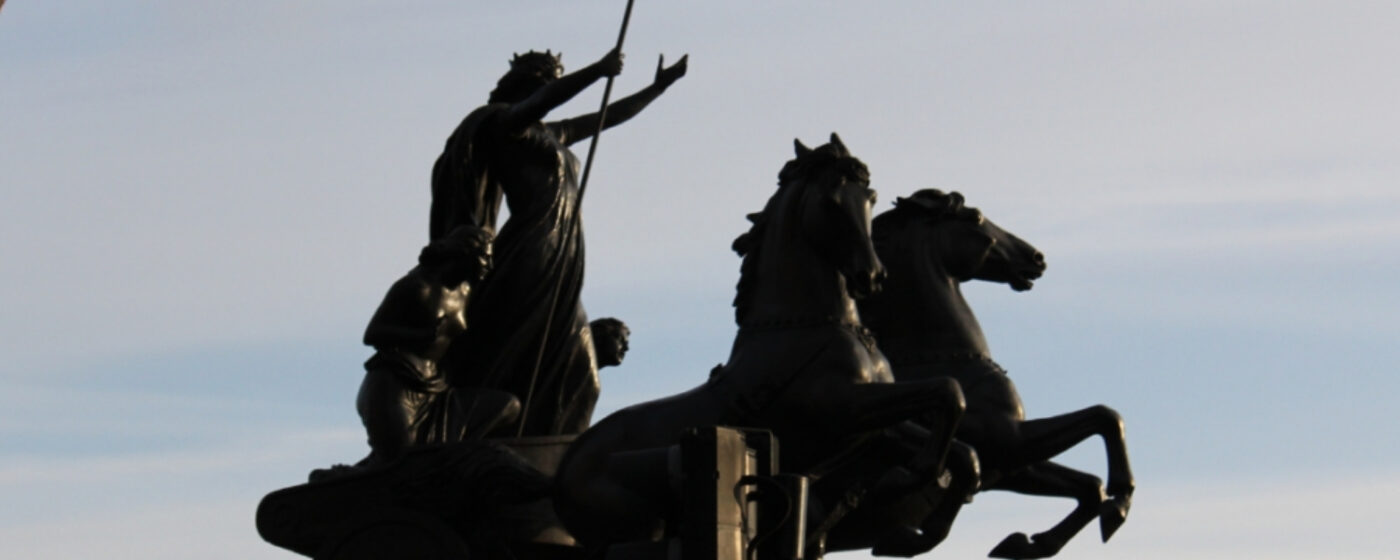From the Iceni to the modern day, Norwich has seen some remarkable women. Whether they be strong or stubborn, ahead of their time or resilient, we’ve had a wealth of women to remember. There’s simply not enough time to tell you about all of them. However, it’s International Women’s History Month and I thought I’d give you a glimpse at some of my favourites!
Boudicca
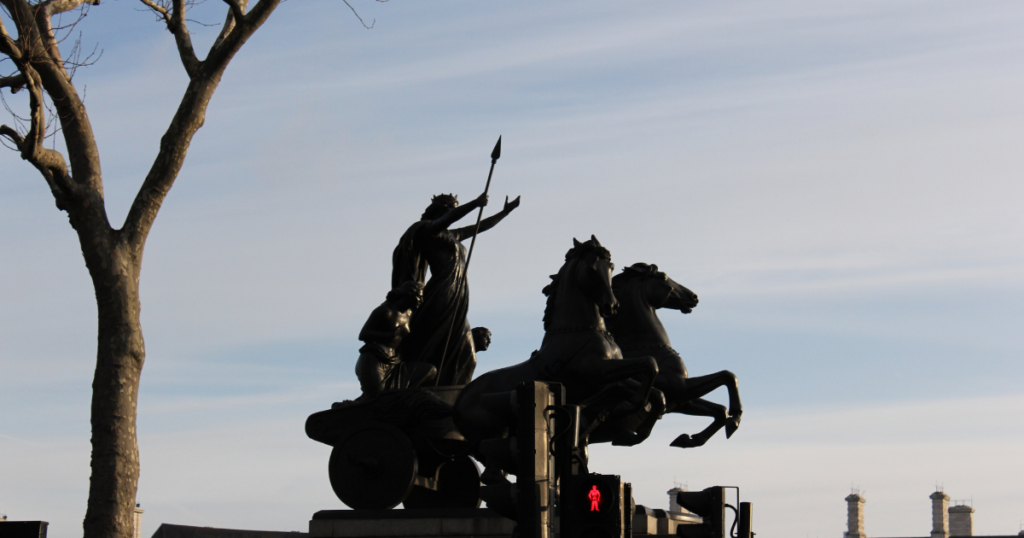
Let’s start with Boudicca. She’s the earliest and possibly the most famous woman in this blog. Her image has been created as that of a powerful warrior with auburn flowing locks all down her back and vengeance on her mind. But who was she before her famous tirade against the Romans? Boudicca was the wife of Prasutagus, who ruled in this area. When he died, he left half of his land and his wealth to the Roman Emperor Nero and the other half to his two daughters, but Nero refused to share and invaded the lands (very Roman of him). He proceeded to inflict horrible violence and abuse on the locals and he sought out Prasutagus’ daughters to do the same. Unsurprisingly, Boudicca started a revolt, fueled by the pain inflicted on her family and her people, she launched attacks, burning Colchester (the power base at the time) to the ground, followed by London. They even intercepted an elite Roman Army, the 9th legion, and annihilated them. This was an impressive battle, it was not easy to defeat a Roman Legion. However, as most of us know already, she did not remain undefeated -her story ends with her and her army being overcome having been lured into a valley backed with forest land, unable to fight her way out, her war was lost. She may not have survived, but her story did.
Now, I do think, in the interest of honesty and history, it is worth pointing out that our heroine is not perfect. Whilst she lead an impressive revolt she did also commit some horrible crimes herself and made some terrible decisions – one such decision was bringing women and children to the edges of battle, ultimately making them much more vulnerable than they need be. Acts such of these are rarely spoken of, we normally speak about her successes, but you must always remember history is not always black and white. We’ll let you form your own opinion! Oh, and there’s no evidence she had red hair, most people will, today, tell you she was blonde!
Anne Boleyn
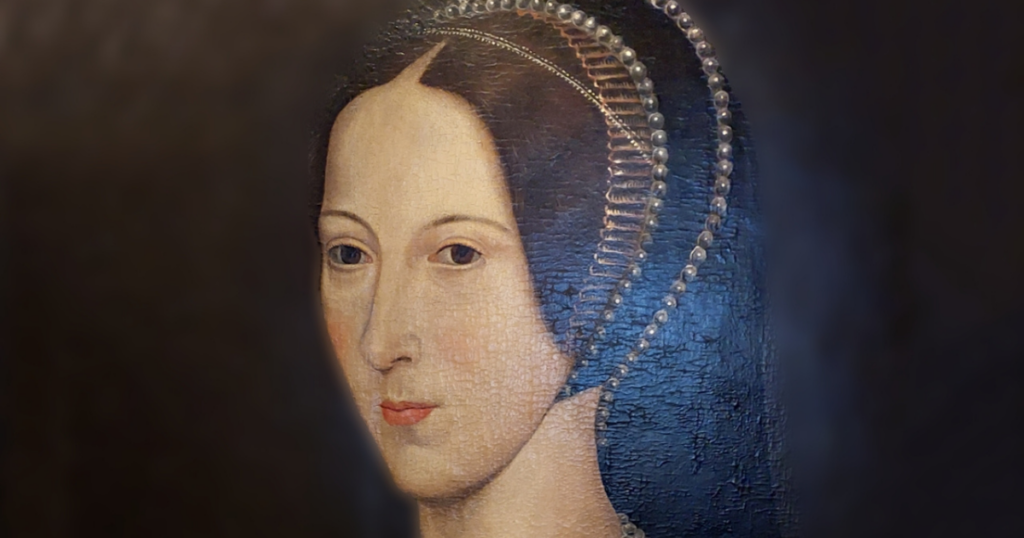
Moving into the time of the Tudors and another famous local woman, Anne Boleyn. Born in Norfolk, in Blickling Manor, now Blickling Hall, somewhere between 1501 and 1507. She, as I’m sure you know, did not survive her marriage to Henry VIII. Today she gets a mention not for being the first Queen to be executed but for who she was before her marriage. Before Henry set his sights on her, she had fallen for Lord Percy, they engaged in secret and were set to be married but Henry had Cardinal Wolsey end the engagement so he could have her all to himself. Although we don’t approve of the actions, we do understand she was quite the catch. She spoke fluent French, played the lute, flute, rebec and harp, supposedly she inspired some of the poets of her time, she could sing beautifully and she even wrote her own songs. She was well educated, not just in the creative arts but in the world and she studied and read whenever she could. She was also charming, witty and smart. I wonder how her life would have been if she’d been allowed to marry Lord Percy.
Mary Chapman
Mary Chapman was born in 1647. She was the daughter of a wealthy weaver, Mayor and Sheriff (not all at the same time) of Norwich, John Mann. The comfortable life she was raised in didn’t shelter her from the horrors of the cruel world that surrounded her. In her childhood she saw some women close to her suffer from “lunacy” and she supposedly at this point, realised that the care they received would not be the same if they had not been from a comfortable family and so she decided to create a safe place for some of Norwich’s most vulnerable people. She founded The House of Bethel, designed for “the reception and care of poor lunatics”. She dedicated her life to the creation and growth of this home. The goal was to ensure all living there would be treated with dignity and respect. If there was ever a report of mistreatment, she would investigate it thoroughly, she ran regular checks and supported the belief that what ailed those that lived in The House of Bethel could be temporary, and they would be able to live as normal once more. You can still find her name on buildings and streets around Norwich to this day, but who she is seems to be lesser known.
Amelia Opie
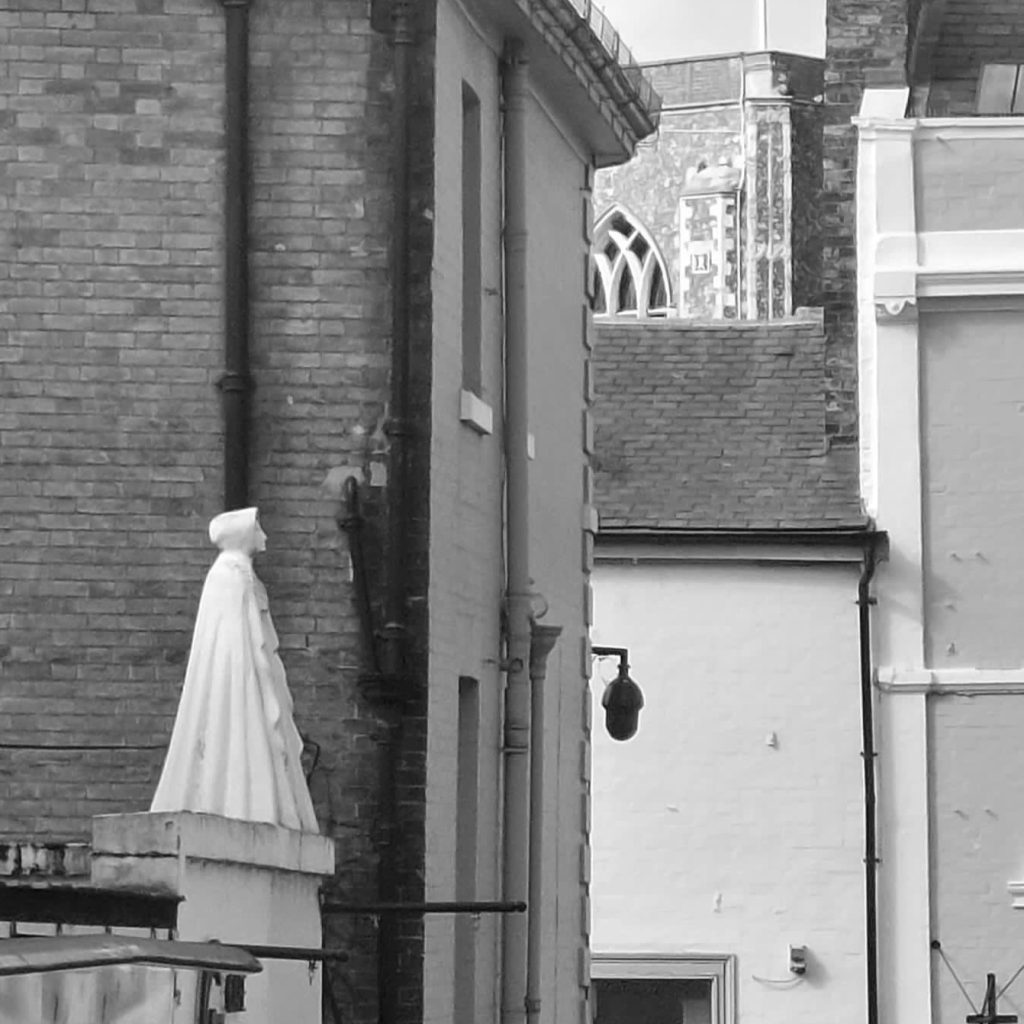
Now for some Georgian and Victorian women who made impressive changes even in a world where women were still not given even some of the simplest rights. Amelia Opie – one of my personal favourites. She was seen at rallies fighting for human rights into her 70s! Amelia started as a novelist, she wrote poems and books, including The Father and Daughter which can still be bought on Amazon today. She was also an abolitionist, a reformist, she worked to help “fallen” women, the poor and those in institutions all over Norwich, she formed Norwich’s first womens group against slavery, attended rallies and tried to speak at conventions and she never gave up despite being told that as a woman she wasn’t allowed to speak at the events she attended. She did however make it into the commemorative painting for the World Anti-Slavery Convention in London in 1840.
Elizabeth Fry
Elizabeth Fry, The Angel of Prisons, 1780 – 1845, worked tirelessly to help not only raise the standards of the living conditions in prisons but push for education and rehabilitation rather than just releasing people back into the same difficult conditions they faced that landed them in prison to begin with. She is also known for her work in improving education for women, who often had no easy access to education and her work in improving life for nurses and the standards of care they gave. One of my favourite things that she did was simply logical but revolutionary, simultaneously. Having seen a young boy frozen to literal death in the streets of London she move the factories to open their doors at night so the homeless could sleep on the factory floor. None of the factories ran overnight and it meant that 200 – 800 people were housed over night – this reduced crime, death and even found people work.
Edith Cavell
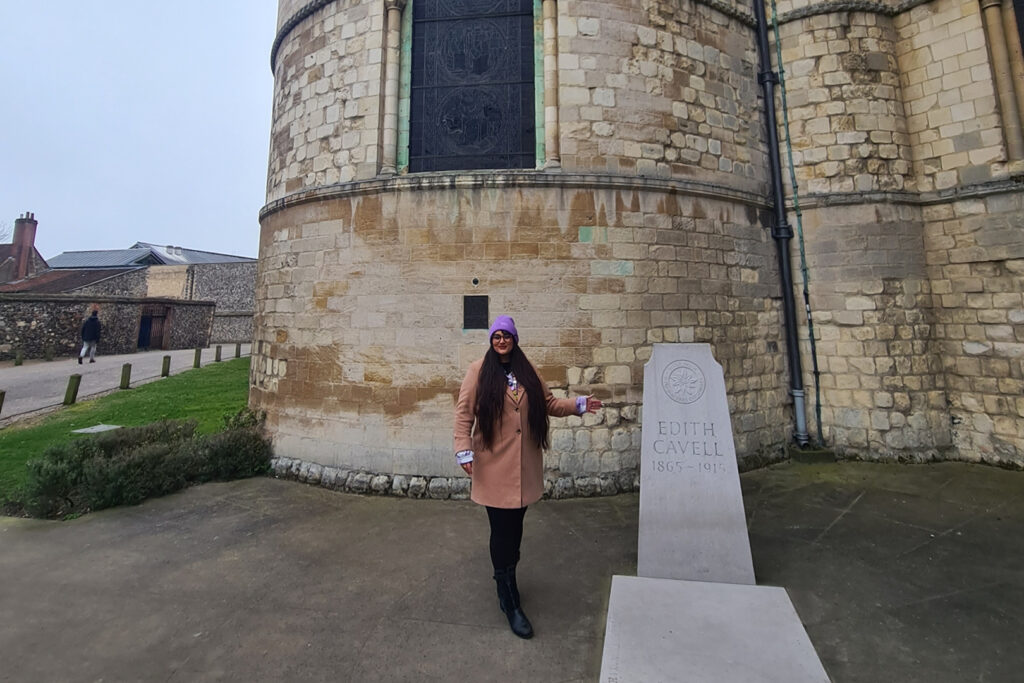
Edith Cavell was born in 1865 and met her untimely end in 1915 at the hands of a firing squad. Her crime? Saving hundreds of lives from the detention camps and from becoming prisoners of war.
When war broke out, she was in Norfolk. There was an opportunity she could have taken to put herself first but instead, she decided that she was “needed now more than ever” and she took off to Belgium to work for The Red Cross. She famously treated British, French and German soldiers alike.
After Germany took control of Belgium, she made a decision that sealed her fate. She started working with an organisation to move soldiers across the border into neutral territories, like the Netherlands, giving them a safe passage home and keeping them out of detention camps.
Sadly, in the end, the organisation were betrayed. She stood trial for helping the soldiers to escape but was accused of helping far less than she really did. She had no shame in telling them it was close to two hundred men she saved, rather than the handful she was accused of! When offered the opportunity to make a plea she merely said “I have nothing more to say” and when offered to make an appeal against her sentence she refused.
There are supposedly many technicalities in her case that could have saved her from her fate but they were all missed. She met her untimely end and was shot by a firing squad on 12th October 1915. After the war, her body was returned to England and was buried in Cathedral Close in Norwich where you can still see her grave to this day.
Mabel Clarkson
Mabel Clarkson, Norwich’s first female councillor, 1875 – 1950. She believed “that the best wealth of a city is in the health of its citizens”. Did you know Norwich has recently had close to a 50/50 split for male and female councillors? We’ve come a long way. She particularly focused on women, children and the most disadvantaged of the city. She advocated for those living in Norwich’s slums. She was the first female sheriff of Norwich (1928–29) and the second female Lord Mayor (1930-31) – Ethel Colman being the first.
Want to know more?
So that’s a handful of some of my favourite women from our brilliant city. They didn’t only try to improve things for women, but for the vulnerable, the young, the old, those on the outskirts of society and those that needed it the most. I think we can all be proud people like that.
If you come along to one of our tours you’re bound to hear about some more local women. We speak about Emma Degauder that held the Castle in 1075 and Elizabeth Howes, who is suggested as a mastermind behind racketeering in Norwich (some will tell you she was simply a smart business woman) and many, many more remarkable men and women from our history.
Tell us your favourite Norwich or Norfolk unsung hero, male or female, young or old, we always love to hear about the achievements of our area and its people.
Sources
Prasutagus – Husband of Boudicca
